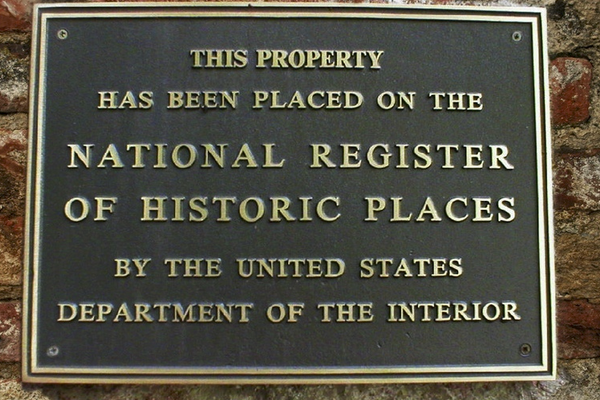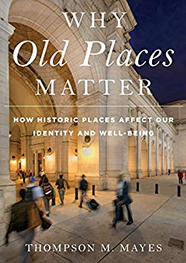Why Preserving Historical Places and Sites Matters

Why do old places matter to people? Why should old places matter to historians, or to the general public that historians serve? What can we learn from the continued existence of old places in our communities, and in our nation? Why does it matter if we save these old places or if we don’t?
There are many reasons old places matter, from memory, to civic identity, to history, to architecture, to beauty, to economics. While even the fourteen reasons I name in Why Old Places Matterdon’t fully capture all the many meanings old places have for people, for the readers of History News Network, I’d like to emphasize one main idea: old places give us an understanding of history that no other documents or evidence possibly can.
At Civil War battlefields like Antietam, historians and visitors alike can understand how a slight rise in the lay of the land could mean victory or defeat, and how one division was lost, while another survived. At artists’ homes and studios like Chesterwood, the home of Daniel Chester French, who sculpted the Seated Lincoln, we can understand how a certain quality of light, or a clear mountain view, or the ticking of a clock, may have inspired a painting, poem, or sculpture – and may inspire visitors today.
At the Lower East Side Tenement Museum, we can understand something profoundly visceral about cramped, dark, and crowded lives of emigrants in New York in the late 19th and early 20th centuries.
And at dirt-floored, often roughly-built slave dwellings, we can try to glean an inkling of the reality of human bondage that we cannot understand from documents alone. We experience old places with all of our senses, like full body immersion, and because of that, we understand different aspects of history as it was lived.
This would be enough. But I believe that these old places play a larger role. The continued existence of these old places may foster a deeper understanding of history that tells a more full and true story.
Yes, these places can be manipulated to spin a particular viewpoint, like the way, for many years, the reality of slavery wasn’t acknowledged at plantation houses, or Native American perspectives weren’t expressed at frontier forts, or the way countless workers were left out of the story altogether. One reason people weren’t acknowledged is that their places were not often recognized, valued, and retained. These are the places that were easy to erase – to pave over with interstates, sports stadiums, and urban renewal. Many have literally been erased from our landscape and our memory.
It’s easier to pretend that slavery was benevolent if the reality of the poor living conditions of slave dwellings isn’t confronting visitors. Or that labor unrest didn’t happen if the places where it happened are bulldozed. Erasure of places can serve to hide truths that can’t be hidden if the place survives. The recognition of sites by the National Trust’s African American Cultural Heritage Action Fund functions as an act of social justice. As a descendant of the Chinese American builders of an 1850’s Taoist temple in Mendocino, California said to me, the fact that the place exists – a Taoist temple from the 1850s—announces to everyone that “we were here.”
If the place survives, it can also become the vortex and venue for understanding our changing civic and national identity. The places we choose to save-or not-reflect our identity. That’s why we see places that are important to the “enemy” being targeted in times of conflict, such as the Mostar Bridge. The destruction of the old place is tantamount to the destruction of the group identity. Old places may also be targeted precisely because they tell a deeper, older, and different story, such as the Bamiyan Buddhas, which were destroyed because they represented a different religion, or the archaeological sites of Babylon or Palmyra.
I don’t want to suggest that we can understand everything about history simply by experiencing the old places where history happened. In fact, I’d like to emphasize a completely different point. These old places matter not only for what they can tell us, but precisely because they raise questions. There are often things about an old building, or a battlefield, or a working landscape that will surprise or puzzle us. It may only be a quirky door, or the etching of initials on glass, or an unexpected rise in an otherwise flat field, or an unusual place name.
An old place continues to carry memories of other stories that we don’t necessarily understand today, like the way the bones of our ancestors continue to surface in our cities and towns where we thought there were no people buried, or the way a Hebrew letter on an ancient column reminds us that the Jews of Rome were not always forced to live in the ghetto.
These puzzles upend what we thought we knew and help us remember that we can never know everything about the past. These quirks at old places jab us to be less arrogant and remind us to be humble and open as we try to understand the past and what it means for us today.
Old places matter because they give us a deeper understanding of the past – an understanding no other documents possibly can, while reminding us to be humble about what we know.
